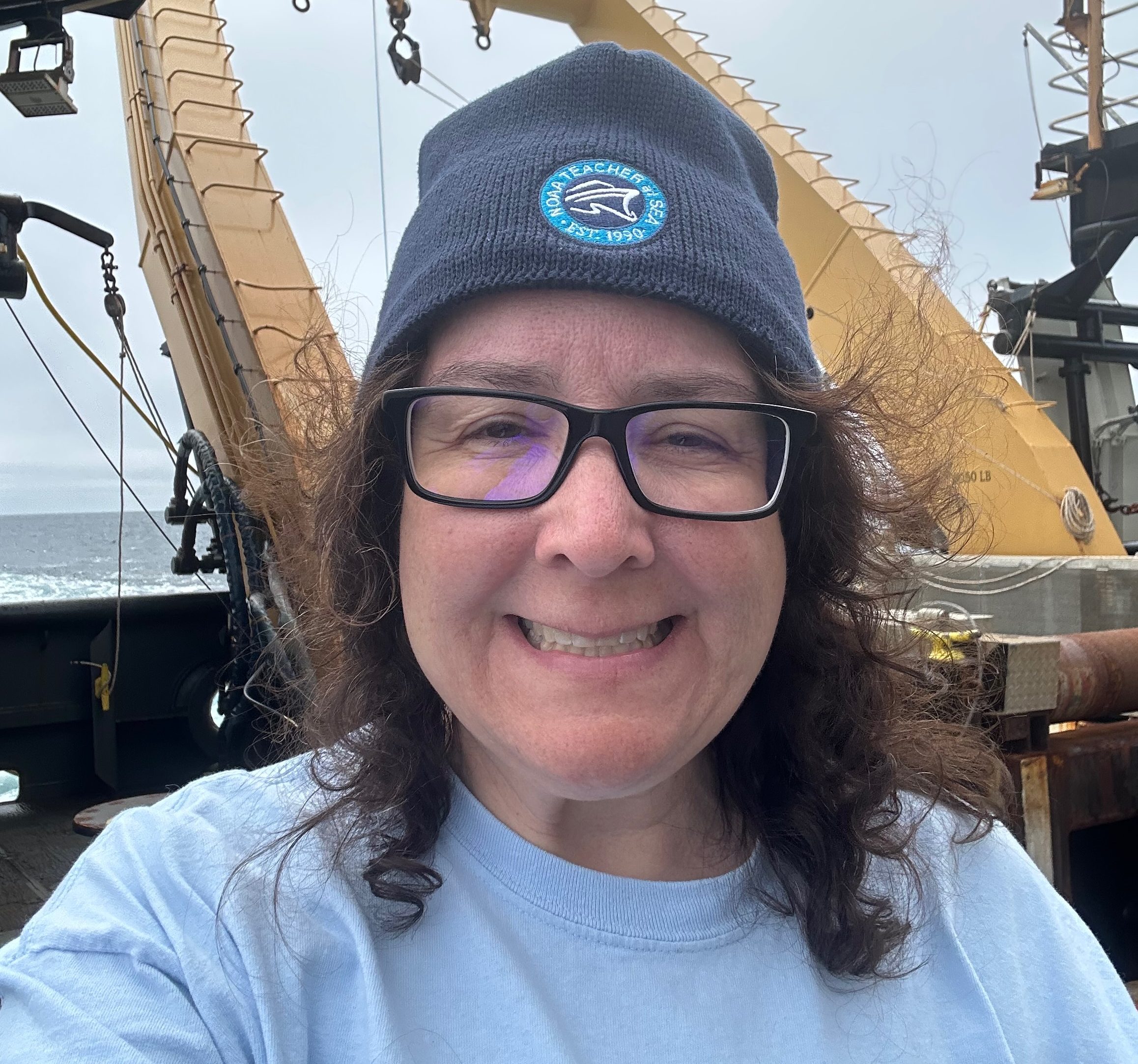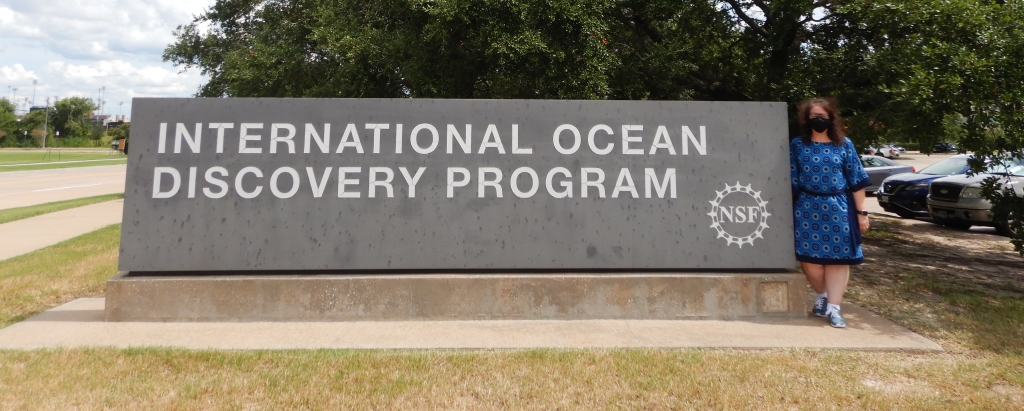In August 2021, I headed down to Texas A&M University and met up with colleagues from across the United States for training to serve as an Onboard Outreach Officer for the scientific drilling vessel JOIDES Resolution (the JR). I’ll be heading out to sea on the JR in April-June 2022 for Expedition 390 along the South Atlantic Transect, where through the magic of the internet I’ll be sharing social media posts, blog entries, and conducting live virtual tours and discussions with the researchers to share the science of the expedition. One of the reasons the training was held at Texas A&M is because it is the home of the JOIDES Resolution Science Operator for the International Ocean Discovery Program (IODP), and it was a chance to learn more about the process and product of scientific ocean drilling through a tour of the Gulf Coast Repository on campus!
I apologize if I seem super-excited to talk about visiting buildings filled with continues cores. For my dissertation work, I spent hours/days in the core repositories of the University of Miami/RSMAS and the Florida Geological Survey sampling and describing cores with mixed carbonate/siliciclastic sediments collected in the Florida Keys and Everglades National Park. I’ve also visited and toured the National Science Foundation’s Ice Core Facility in Colorado. Learning about how cores drilled through ocean sediments and crustal material are collected and stored was a new opportunity to add a tour of ocean cores to my list of core repositories! [*Note – I’m also fascinated by this recent article (June 2021) published in EOS that descirbes how “core libraries store a treasure trove of data about the planet’s past. What will it take to sustain their future?”]
IODP has three core repositories – the Gulf Coast Repository (for DSDP, ODP, and IODP cores from the Pacific Ocean, the Caribbean Sea and Gulf of Mexico, and the Southern Ocean), the Bremen Core Repository in Germany, and the Kochi Core Center in Japan. Combined, these three facilities hold over 450 km of core. The Gulf Coast Repository (GCR) has approximately 151 km of core, and currently only has room for 15 km more in its existing 15,000 square feet of refrigerated space. [*I also learned that the refrigerators are referred to as “reefers”]
Our group entered the large doors into the storage space and immediately noticed the drop in temperature. The reefers are kept at 40oF (4.4oC), as that is the average temperature these core segments were collected at. There are racks and racks of cores, with each row organized by the site/location and time. Each core is split into a working half that is sampled (with black caps on the end) and a half that is archived (red caps). Each core is shrink wrapped in food quality plastic wrap so that the material does not dry out.
In addition to the cores, there are color-coded bins with samples – the red bins have the residue of samples collected on the ship, while the gray bins are return samples sent back to GCR once researchers have used and finished with them.
We were able to see the laboratory working space (much warmer in temperature!) for description, sampling, and even XRF analysis. Seeing the XRF scanner in the lab brought me back to my XRD days in graduate school – I was looking for the mineral composition in my continues cores, which X-ray diffraction will determine. But for X-ray fluorescence, the x-rays that shoot at the surface of the core only tell you the elemental composition at that location in the core, based upon the angle the signal bounces back. It was interesting to hear that XRF analyses can be done on the archive half of a core, and at very high resolution (2-5 cm), as the x-rays do not damage the core material.
One of my group asked the GCR curator if she had a favorite core – and her eyes lit up immediately! She said that Expedition 364 (a mission-specific drilling platform from April-May 2016) drilled through the K/T boundary (that’s the dinosaur extinction marker in geologic time), and she was able to run in and grab it for us to see. Very cool section of core, indeed!
It’s a shame we didn’t have more time to explore behind all of those black and red caps on the split cores on the racks! So many questions, so much that has been studied, but so much more to learn. We had an incredible time going through the Gulf Coast Repository, and what an opportunity to see samples collected at depth in our ocean basins. For those interested in seeing some more core images from the GCR, there are some photos online with descriptions you can check out.
I’m looking forward to being on the JOIDES Resolution in 2022 and witnessing the corse sampling process, and seeing cores sampled from Expedition 390 in an IODP core repository!















[…] learn more about scientific ocean drilling, please read about my tour of the Gulf Coast Repository in College Station, […]
LikeLike
[…] IODP did host an onsite training workshop at its facilities at Texas A&M University in August 2021. This was the first flight I had taken science the Ocean Sciences Meeting in February 2020. I packed so many masks, so much hand sanitizer – but also packed my enthusiasm for meeting the other Outreach Education Officers that would be sailing on the JR for four different expeditions (see blogs posts about JR training (forthcoming) and the Gulf Coast Core Repository). […]
LikeLike
[…] Each OOO was able to Zoom with their expedition’s co-chief scientists and project manager/staff scientist to discuss the science objectives and what the co-chiefs would like to see us focus on for our outreach and dissemination. We learned more about the onboard technology available, and we even got to practice walking around the building with an iPad as if we were giving a tour (showing each of us that the coordination would take some more practice to perfect!). A big highlight for me during our training was our time visiting the Gulf Coast Core Repository (blog post with photos). […]
LikeLike